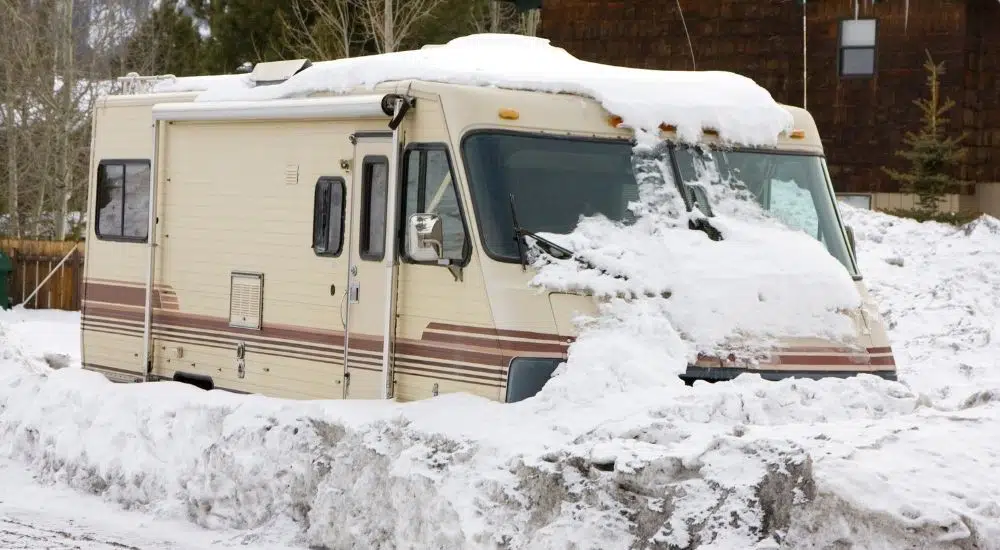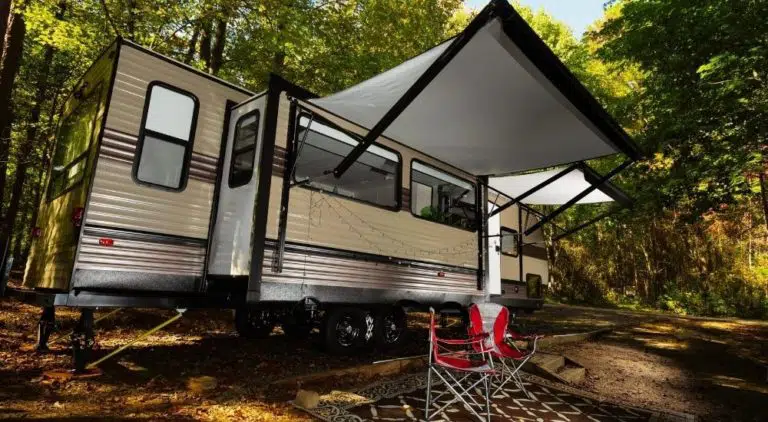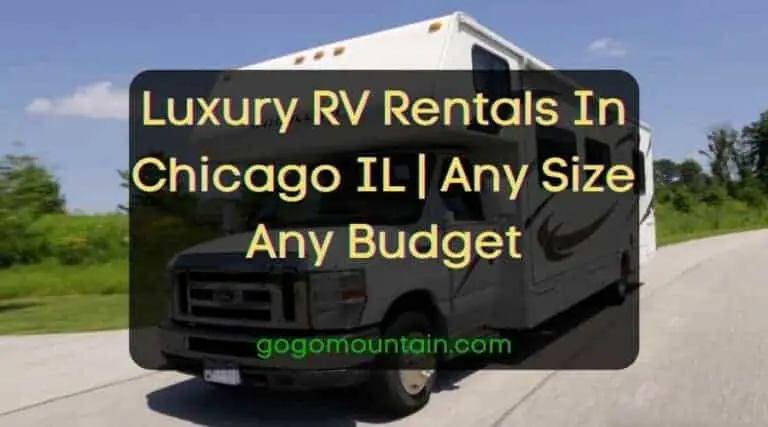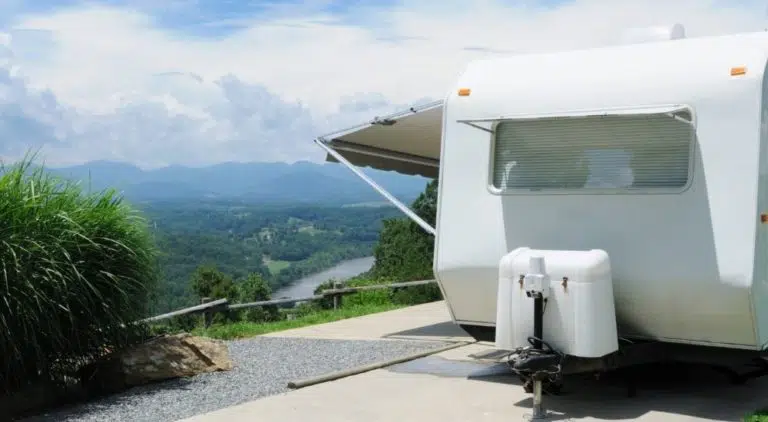10 Tips For RV Camping In Cold Weather
There are many steps you would want to take to prepare for RV camping in cold weather. Most of the things you need to consider will be with thermal protection during cold weather.
All RV camping fans should be prepared to check the RV as well as to make small improvements for cold weather protection.

RV Camping In Cold Weather – 10 Tips
Insulate the RV
The first thing to do is to insulate the RV. All areas of the vehicle which aren’t insulated are areas where heat is lost. Heat can be lost slowly or rapidly. However, it’s best to check which areas of the RV can be insulated.
Floors are often insulated for wintertime camping. Wooden floors are ideal for durability. But even adding carpets to the floors can help keep the interior warmer. Custom carpeted floors offer the best thermal protection over carpets that don’t cover the entire area of the floor.
Have the engine checked
The engine remains the most important part of the RV. Regular wintertime engine checks are recommended. These start with checking the coolant level and continue with checking battery charging status. RV batteries tend to show their limits in cold weather first.
Batteries that aren’t fully charged or that are only partially charged are problematic. They can even lead to the inability to start the engine in cold weather. Changing the batteries, checking oil and coolant levels as well as all-electric sensors is a must when it comes to keeping the engine running in cold weather.
Cover up the plumbing
The plumbing of the RV starts outside and makes its way inside. You need to cover the plumbing to prevent freezing and having to deal with expensive piping replacements.
Exposed water pipes are the most problematic. You need to cover the water main running from the water tank to the tap inside the RV. This can be done using various materials for thermal protection purposes. Even poor materials are better than no cover-up at all.
Get a few heaters
Heaters are essential for an RV. You might be stuck in the snow for a few days when traveling less common roads with the RV and you need good heating. There are various types of heaters to consider for RVs in the winter.
Electric heaters are the common choice as they are affordable and provide a good amount of heat.
Portable heaters are also a valid option since they’re smaller and don’t take up as much space inside the RV. Catalytic heaters are an interesting alternative as they don’t produce potentially dangerous carbon monoxide inside the RVC.
Invest in a good shovel
Shovels are a must when traveling by vehicle in the winter. Even carrying multiple types of shovels is recommended.
Small shovels are ideal for clearing snow and debris from underneath the RV so that the tires can get moving.
Large shovels are ideal for clearing snow around the RV. Large shovels are also not suitable for clearing snow under the RV.
Get appropriate tire chains
RV tire chains are a must in areas with a lot of snow. Any type of tire chain should be sufficient to help grip during heavy snowfall. While it’s always best to stay clear of roads where snow isn’t cleared, this can sometimes be impossible. Investing in multiple tire chains for all RV tires is ideal.
Pack more food and water
It’s always wise to pack more water and food than needed when out with the RV. However, wintertime conditions are changeable. Many campers can get stuck in the snow for days. Food and water are crucial in this interval.
Investing in canned food or dry food that doesn’t have a short sell-by date is ideal alongside bringing fresh food. Water is crucial as well. You can ensure the water tank is full and also buy bottled water to store inside the RV for the winter. Since temperatures are lower, fresh food can also last longer in the RV during the winter.
Install vent covers
All RV vents need to be covered during the winter. Vents are ideal for quick ventilation but they also allow cold air inside the RV. While keeping at least one vent open is often smart, this can be troublesome when camping in freezing temperatures.
RV vent covers are small pieces of plastic sold as attachments. These can be installed and taken off easily, without the help of a professional. Vent covers that can be left open include those that are not directly exposed to wind.
Switch to an internal water tank
External water tanks are easy to fill and clean. However, external water tanks often freeze during the winter. Internal water tanks might be a better solution even if they take up more space inside the vehicle.
Internal water tanks such as those installed under the sink benefit from the heat inside the RV. This placement ensures water won’t freeze even when the heat isn’t turned to maximum power output inside.
Invest in RV skirting
RV skirting is sometimes seen as an unnecessary investment. However, RV skirting can ensure all of the pipes under the vehicle don’t freeze. This means skirting can stop the cold draft from making its way under the RV.
This type of skirting also adds a layer of thermal protection. Most types of RV skirting keep the floor of the vehicle warmer and they also offer better thermal protection inside the vehicle.
Buy insulated window covers
Windows are areas where heat is lost fast. Even some of the best windows tend to be troublesome in the winter. Insulated window covers are some of the necessary accessories to keep heat inside the RV. This is essential for low electricity consumption or better thermal efficiency.
Prevent condensation by cooking outdoors
Too much heat from the wrong source can be troublesome in the winter. Cooking and boiling are examples that can come with plenty of issues during the winter. Cooking smells might require you to open the door or the windows which allow a lot of cold air inside. Boiling is troublesome for RVs that are properly insulated for the winter.
Boiling creates high levels of moisture and condensation inside the RV. Without proper ventilation which is a bit difficult to ensure in cold weather, this then leads to mildew problems inside the vehicle.
Many campers recommend finding solutions to cook outdoors during the winter. From portable fire stoves to camping gas stoves, there are viable alternatives that prevent frequent condensation issues inside the RV when cooking in the winter.
Summary
Preparing for RV camping in cold weather takes a bit of an effort. Campers need to check the engine and batteries. Adding thermal protection to the underside of the camper is crucial as well. Furthermore, campers need to decide how they manage fumes and cooking moisture inside the camper in cold weather.
Most importantly, campers need to think about heating sources for the winter. Electrical heaters tend to be a popular option. Apart from the heaters themselves, properly insulation the RV is also crucial. Areas such as the windows, vents, or gaps under the door need to be sealed to prevent cold air from making its way inside the camper.
7 Ways on How to Keep RV Pipes From Freezing While Camping
RVShare Review – Is RVshare Safe
Solo Stove Ranger Firepit Review – Is it the Perfect Portable RV Camping stove?








